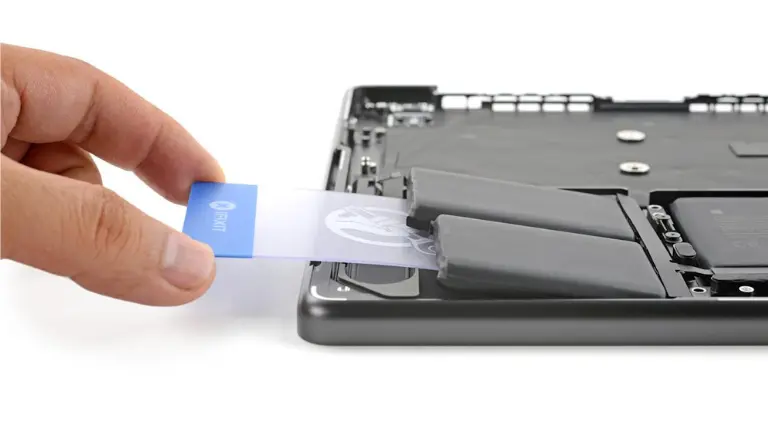Apple’s latest M5 MacBook Pro might look identical to its predecessor on the outside, but under the hood, it’s hiding a thoughtful tweak that’s winning quiet praise from repair experts. According to early teardowns, Apple has made the battery slightly easier to replace, marking another small step toward improved device repairability.
A small but meaningful design change
Inside the M5 MacBook Pro, Apple has reportedly separated the battery adhesive strips from other critical internal components, making it possible to remove the battery without completely disassembling the laptop. While the process is still not as straightforward as swapping out batteries on older models, it’s a welcome improvement for repair technicians and environmentally conscious users.
This design tweak means users may no longer need to remove the entire logic board to access the battery—a previous pain point noted in the M4 and M3 models.
Why it matters
Apple has faced growing pressure from Right-to-Repair advocates and regulators to make its devices easier to maintain and recycle. Although the company hasn’t publicly highlighted this change, it aligns with Apple’s recent push toward sustainability and serviceability, especially in Europe where new laws require replaceable batteries in certain electronics.
By making the M5 MacBook Pro battery slightly more accessible, Apple is signaling a slow but steady shift in its design philosophy—balancing sleek design with practical repair options.
Expert reactions
Repair experts at iFixit and other teardown specialists have praised the improvement, calling it “a step in the right direction,” even if full repairability is still a long way off. Users can expect that future MacBook Pro models might continue this trend as Apple responds to increasing consumer demand for eco-friendly repair solutions.
While Apple’s M5 MacBook Pro doesn’t revolutionize battery access, it shows the company’s willingness to make small yet important strides toward sustainability and user convenience. For professionals who depend on their MacBooks daily, even a minor improvement in serviceability can make a meaningful difference over the product’s lifespan.
